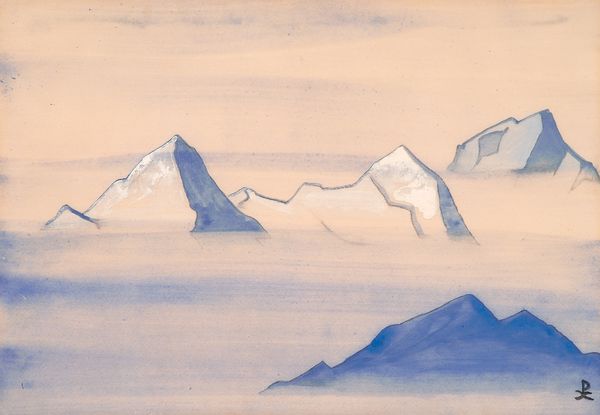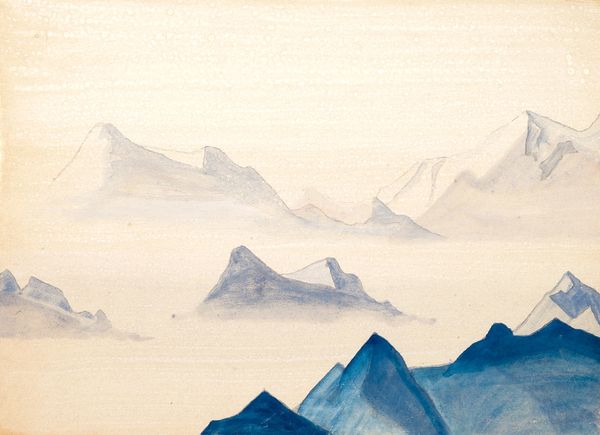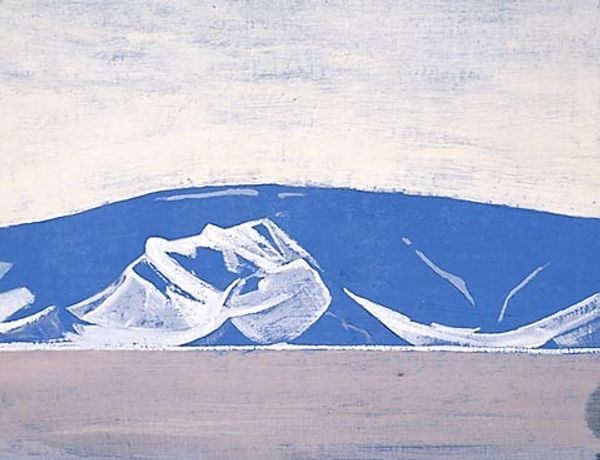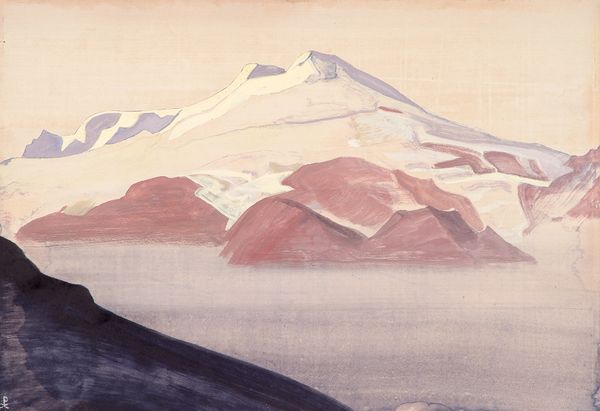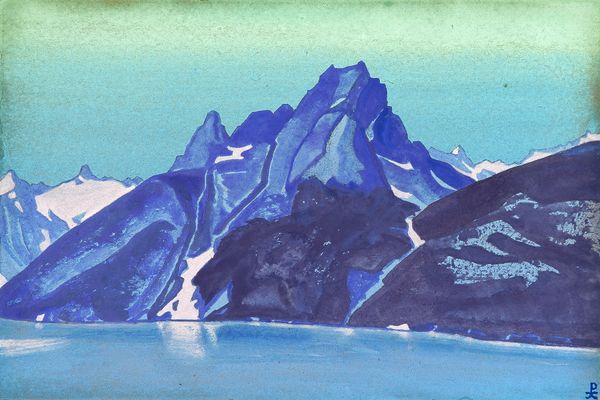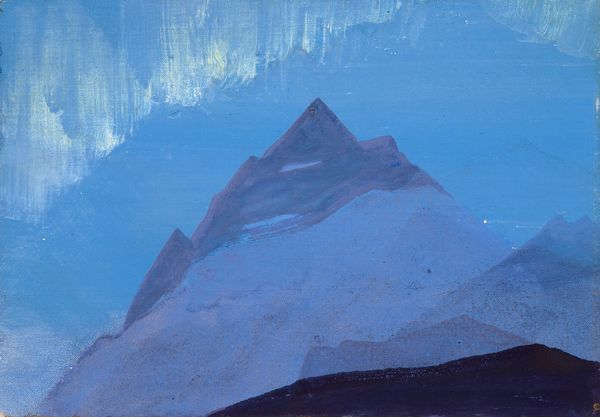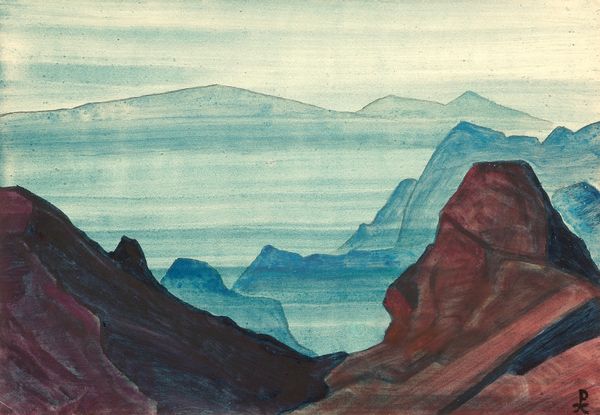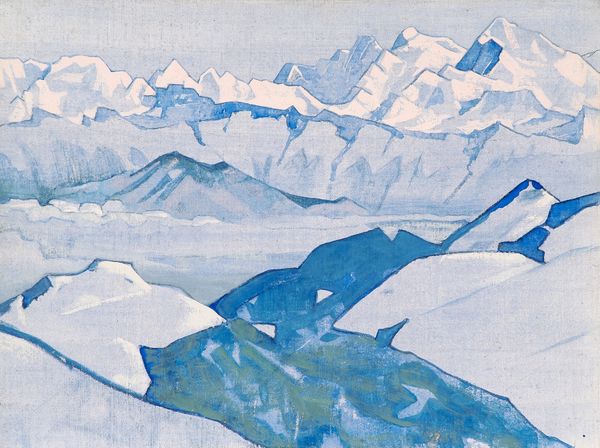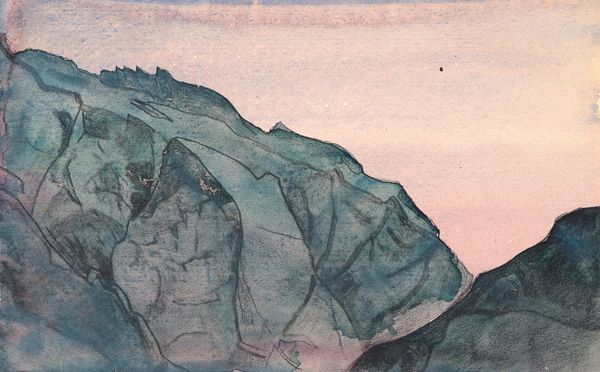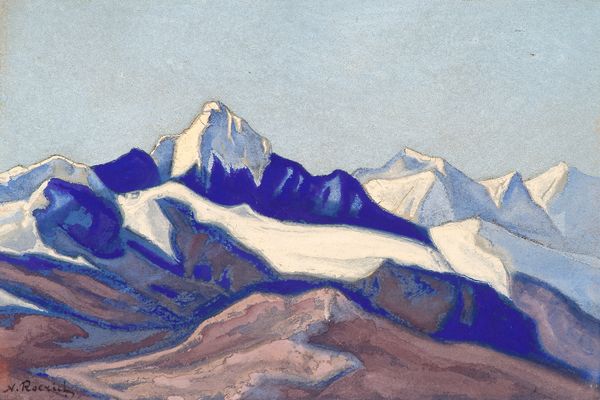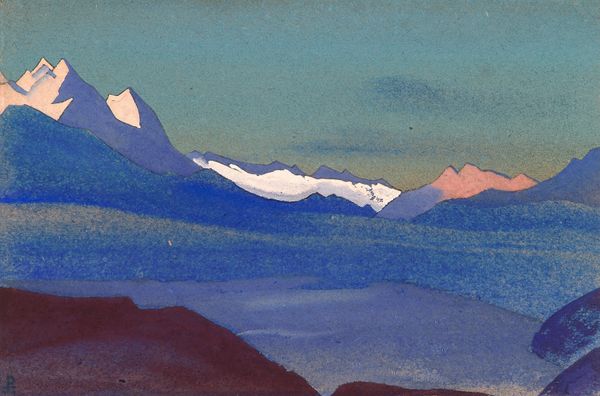
Copyright: Public domain
Curator: So serene… it reminds me of that first inhale of mountain air, that sort of icy clarity you only get at high altitudes. Editor: Exactly! But there's a distinct coolness about it as well. "Himalayas (study)" created by Nicholas Roerich in 1934; this is a watercolor piece, painted *en plein-air.* You see, the wispy strokes and shades of blues… feels so… distant. Curator: I can almost feel the wind, y'know? It's as if Roerich wasn't just capturing a mountain range, but distilling the very essence of elevation, maybe even spirit. The brushwork is so fluid! It feels almost effortless, yet there’s an incredible structure to the composition. Editor: "Effortless" is one way to describe the aesthetic. From my perspective, watercolor demands speed and precision, especially *en plein-air.* Think about the labor involved: hauling materials, battling the elements, not to mention Roerich's ideological leanings reflected here... Curator: Oh yes, the artist and mystic… He wasn’t merely rendering a landscape but invoking a kind of spiritual presence, right? Editor: Roerich had strong links to Theosophy which may account for the simplified forms and emphasis on symbolism rather than realism, yet I keep getting snagged on the handmade aspect of paper and watercolour and the relative cheapness of the materials versus painting in oils, let's say. Did that contribute to his almost ethereal interpretation of such powerful scenery? Curator: Interesting perspective. Personally, I see the watercolor adding to that feeling of impermanence, a kind of beautiful fragility. The mountains, timeless as they are, appear almost dreamlike. The choice of materials definitely heightens the sense of awe for me! Editor: Well, no argument that it does feel ephemeral. What intrigues me now is, in the 1930s, how available were these artist grade materials to ordinary artists and how far did one have to travel in search of subjects? The creation of artworks often relies on quite concrete considerations such as this. Curator: Point taken. Well, all in all, it’s definitely a work that inspires reflection, right? Editor: Indeed, art born out of place and production value that still echoes strongly, even now.
Comments
No comments
Be the first to comment and join the conversation on the ultimate creative platform.
